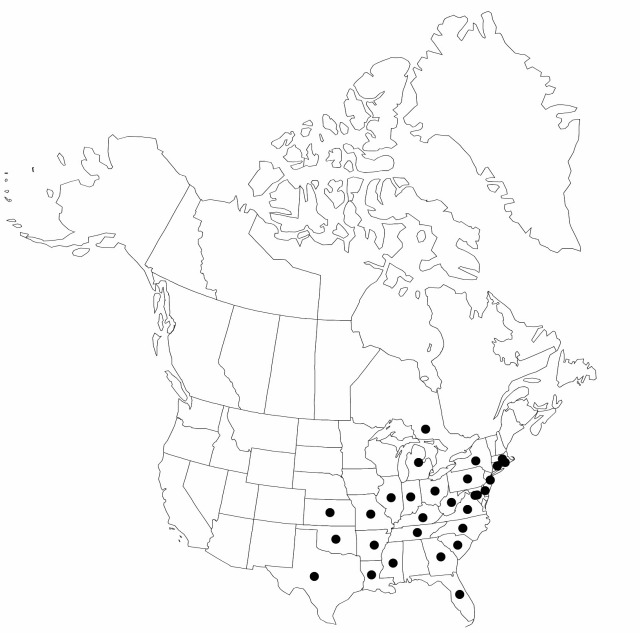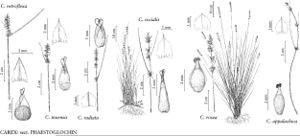Carex retroflexa
Sp. Pl. 4(1): 235. 1805.
Plants without conspicuous rhizomes. Culms 10–75 cm, 1.3–1.8 mm wide basally, 0.5–0.8 mm wide distally. Leaves: sheaths tight, green, fronts hyaline; ligules less than 2 mm, wider than long; widest leaf blades 1.4–3 mm wide. Inflorescences with 3–9 spikes, 1–4 cm × 5–9 mm; proximal internodes 1–3 times as long as proximal spikes; proximal bracts to 6 cm; spikes with 3–10 spreading perigynia. Pistillate scales hyaline with green midvein, ovate, 2–3 × 1.4–1.6 mm, 3/4 length to equaling perigynia, apex acute to acuminate. Anthers 1.5–2.3 mm. Perigynia green to pale yellow, faces weakly veined, 2.5–3.2 × 1.2–1.8 mm, base of body spongy, thickened and longitudinally striate adaxially, spongy region 0.8–1.5 mm, margins entire, serrulate distally; beak 0.7–1 mm, apical teeth 0.1–0.3 mm. Stigmas straight or slightly twisted, 0.05 mm wide. Achenes ovate-circular, 1.3–1.6 × 1.3–1.5 mm. 2n = 40.
Phenology: Fruiting spring.
Habitat: Thickets and openings in dry deciduous forests
Elevation: 10–500 m
Distribution

Ont., Ark., Conn., Del., D.C., Fla., Ga., Ill., Ind., Kans., Ky., La., Md., Mass., Mich., Miss., Mo., N.J., N.Y., N.C., Ohio, Okla., Pa., R.I., S.C., Tenn., Tex., Va., W.Va.
Discussion
Records of Carex retroflexa and C. texensis are not always clearly distinguished, consequently some reports of C. retroflexa may refer to C. texensis.
Selected References
None.
